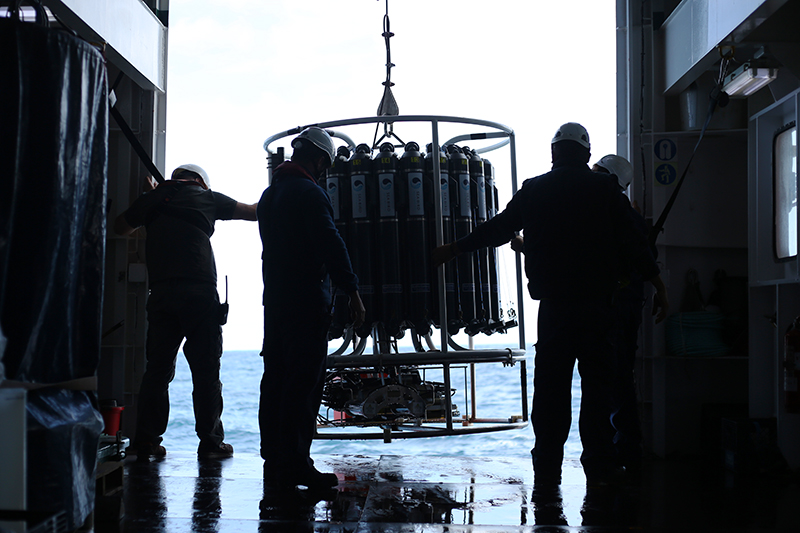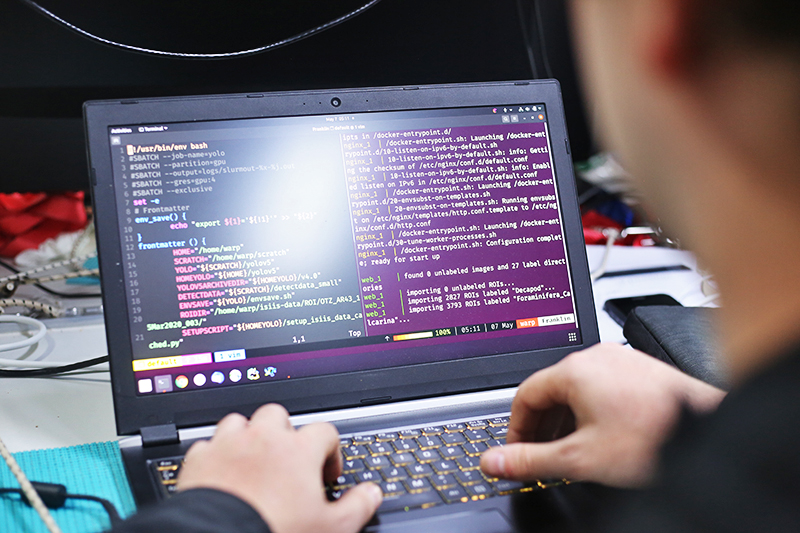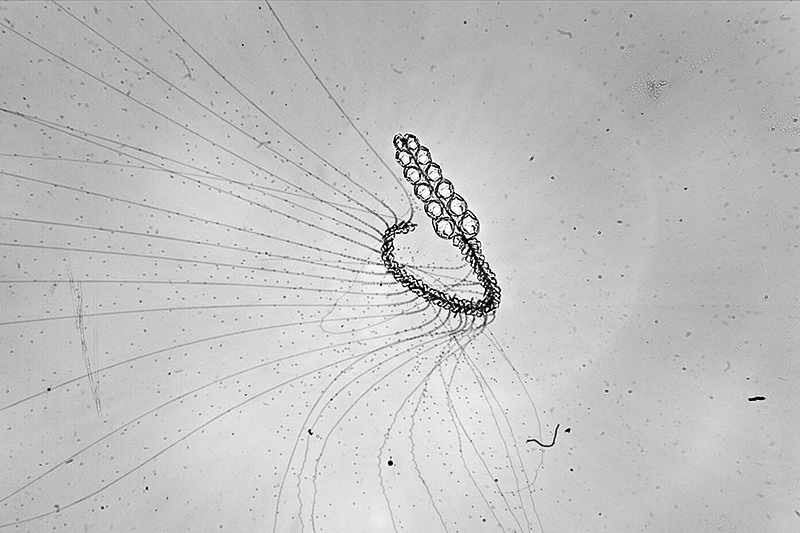Day 10: Back to work!
By Marley Parker
After a few days of weathering rough seas, science operations aboard the Sarmiento de Gamboa are back in full swing.
In the past 24 hours, everyone on board has been hard at work. Since midnight on Wednesday, the crew and science team have coordinated to deploy MOCNESS and the StingRay multiple times, back to back.
Since the weather improved, we have deployed the TZEx, as well as five MINIONs. We have also completed three CTD casts, for a total 864 liters of ocean water that our hydro team is currently processing.
“We’re all so reenergized,” says co-lead scientist Heidi Sosik. “Getting back to work, getting data and samples — it feels amazing.”
Meet researcher John San Soucie
By Marley Parker
John San Soucie is a PhD student in the Massachusetts Institute of Technology (MIT)—Woods Hole Oceanographic Institution (WHOI) Joint Program in Oceanography/Applied Ocean Science and Engineering. This is his third oceanographic expedition.
Can you describe your research in five words?
Where are all the plankton?
How did you develop an interest in ocean science?
Growing up, I didn't really know oceanography was a thing. I was born and raised in Dallas, Texas and I was always interested in physics and other kinds of sciences. I had friends who were into biology, but they all wanted to be doctors or work in a lab.
While I was studying physics and computer science in undergrad, I was offered an opportunity to do research in physical oceanography. I quickly realized the work I was doing could have a real-world impact, and I enjoyed the research far more than I anticipated.
When I was looking at grad schools, I tried to find scientists whose work combined my research interests—ocean science and computer science.
I think it’s important to raise awareness about how cool, interesting, and weird ocean science is. There is still so much we don’t know about the ocean – it really is one of the final frontiers.
What is your role on the ship during this expedition?
I am assisting Heidi Sosik with the deployment and operation of the StingRay and the shadowgraph imaging system on it. It collects about 14 images per second while it's towed through the water for hours at a time, which produces tons of data.
We’re collecting all this really interesting information about what lives in the twilight zone – but now we need tools to fully understand what we’re looking at. A big part of my job is wrangling the math so that scientists can understand all the data.
How does the shadowgraph imaging system work?
Many of these animals are semi-translucent so light doesn't reflect off them; instead, it passes through them. The idea behind the shadowgraph is to block the passage of light to varying degrees. Imagine if your skin was transparent: if we put a bright light next to you, we could see the outlines of all your bones and organs. These are the types of images we get of creatures in the ocean. We can see the inner structures of jellyfish, for example. It’s an incredible tool that allows us to capture beautiful images of these creatures.
What do you enjoy most about doing science at sea?
As a student working on a research vessel, I never really know what is going to happen and what role I might be asked to fill. Being open to new experiences allows me to learn a lot about the ocean and about what other people study.
In this day and age, people don't really travel by ship any more— they usually fly or drive. So, to be at sea at all is a rare gift. But to get to see the creatures that inhabit the ocean in the way that scientists on a research vessel do, it’s an extraordinary perspective, and an incredibly valuable one. I feel very lucky to get a glimpse into something that is so mysterious.









